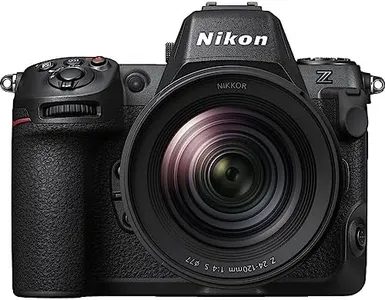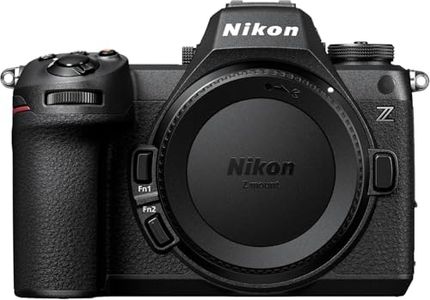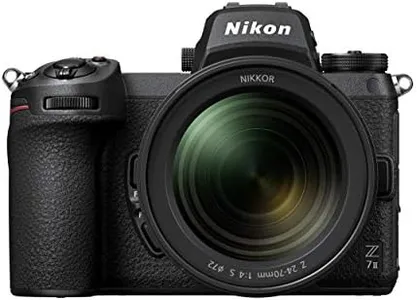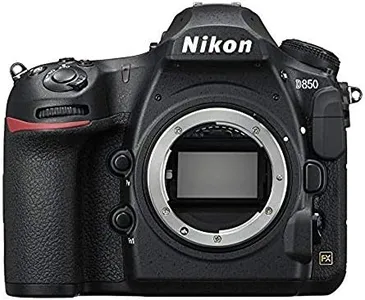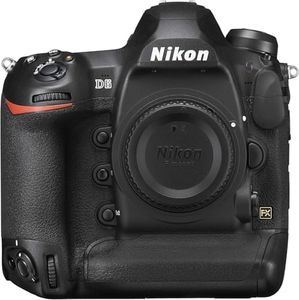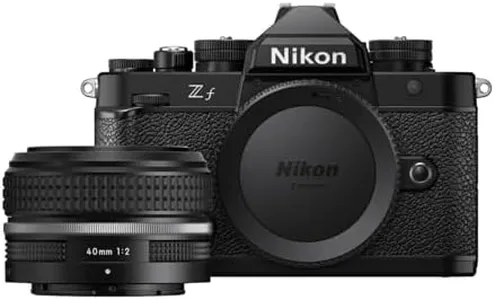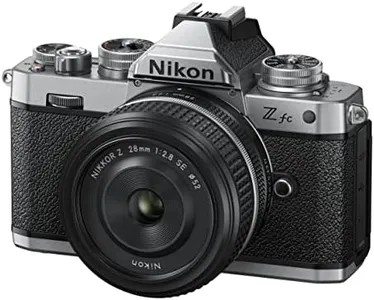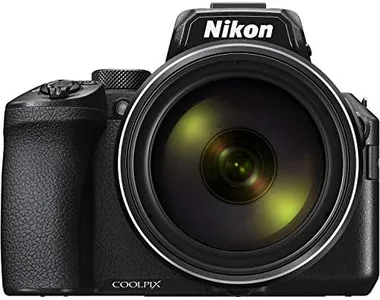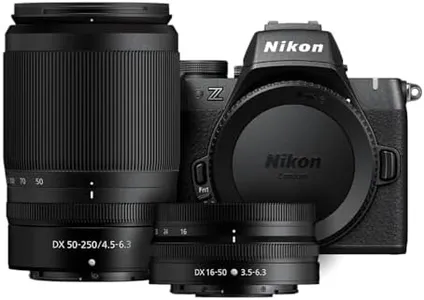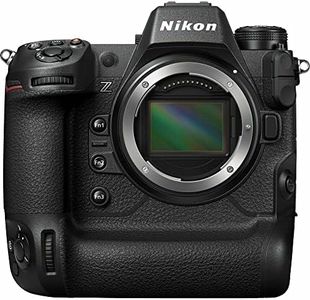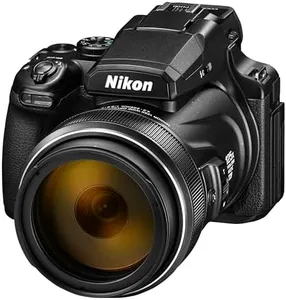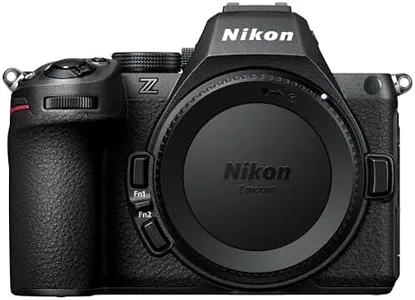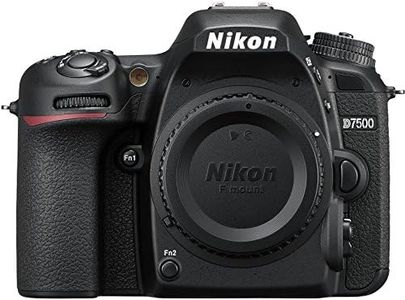10 Best Nikon Cameras 2025 in the United States
Our technology thoroughly searches through the online shopping world, reviewing hundreds of sites. We then process and analyze this information, updating in real-time to bring you the latest top-rated products. This way, you always get the best and most current options available.

Our Top Picks
Winner
Nikon Z 8 with Zoom Lens | Professional full-frame mirrorless hybrid stills/video hybrid camera with 24-120mm f/4 lens | Nikon USA Model
Most important from
210 reviews
The Nikon Z 8 is a powerful full-frame mirrorless camera designed for professionals who want top-tier performance for both photos and videos. It features a large 45.7-megapixel stacked CMOS sensor that delivers highly detailed images, and a wide ISO range up to 102,400 for shooting in various light conditions. Its autofocus system is one of Nikon’s most advanced, using deep learning to track a wide variety of subjects accurately, even in very low light, making it excellent for fast action or wildlife photography.
For video, the Z 8 supports impressive internal 8K at 60 frames per second and 4K at 120 fps, plus 12-bit RAW recording options, giving videographers lots of flexibility and high-quality footage. The camera includes sensor-shift image stabilization to help keep shots steady, which is useful for both stills and video. The included 24-120mm f/4 lens covers a versatile zoom range suitable for landscapes, portraits, and general photography.
Build quality and ergonomics are solid, with a fully electronic viewfinder offering 100% coverage and a tilting touchscreen that’s easy to use. The camera is fairly lightweight for its capabilities, weighing just over 3 pounds, and supports dual memory card slots for extended shooting. While the bundled lens’s maximum aperture of f/4 isn’t very fast for low light or shallow depth of field compared to prime lenses, and the camera relies on sensor-shift stabilization rather than in-lens stabilization, it offers blazing-fast continuous shooting speeds up to 120 fps that benefit specific action photography scenarios. The Nikon Z 8 with the 24-120mm zoom lens is an excellent choice for professionals and serious enthusiasts seeking a versatile, hybrid camera excelling in both high-resolution stills and cutting-edge video capabilities, particularly for dynamic subjects.
Most important from
210 reviews
Nikon Z6 III | Full-Frame mirrorless Stills/Video Camera with 6K/60p Internal RAW Recording | Nikon USA Model
Most important from
145 reviews
The Nikon Z6 III is a full-frame mirrorless camera that excels in both still photography and video recording, making it a strong contender for professionals and advanced enthusiasts. One of its standout features is the impressive 6K/60p internal RAW video recording coupled with high-resolution 4K options, catering to those who prioritize video capabilities. The camera's wide ISO range of 100-64000 (expandable to 204800) allows for excellent performance in various lighting conditions, making it versatile for different shooting scenarios.
The autofocus system is another major strength, boasting 299 focus points with enhanced speed and accuracy, even in low light. This improvement will be particularly appreciated by those capturing fast-moving subjects or working in challenging conditions. The electronic viewfinder, with a maximum brightness of 4000 nits and a high resolution, provides a clear and vibrant view, which is essential for composing shots in bright environments.
However, the Z6 III does have some drawbacks. While it offers robust features, it is targeted more towards skilled users, which might be overwhelming for beginners. The build quality, although solid, could feel a bit bulkier compared to other lighter models, which might not be ideal for users who prefer a more compact camera for travel. Additionally, the lack of built-in image stabilization can be a concern for those who shoot handheld frequently, especially at longer focal lengths. In terms of lens compatibility, being part of the Nikon Z system is a plus, as there is a growing range of lenses available, but users may need to invest in additional lenses for specific needs. Despite its limitations, the Z6 III stands out for photographers and videographers looking for a powerful, feature-rich camera capable of delivering high-quality results.
Most important from
145 reviews
Nikon Z 7II with Zoom Lens | Ultra-high resolution full-frame mirrorless stills/video camera with 24-70mm f/4 lens | Nikon USA Model
Most important from
317 reviews
The Nikon Z 7II is a high-resolution full-frame mirrorless camera designed for professional photographers who require detailed and sharp images. With a whopping 45.7 megapixels, it captures incredible detail, making it ideal for landscape photography, studio work, and large prints. The camera's robust autofocus system with 493 points ensures fast and accurate focusing, even in challenging conditions. It also offers a wide ISO range up to 102400, which helps in low-light situations, though very high ISO might introduce some noise.
Video enthusiasts will appreciate its ability to shoot 4K UHD videos at up to 60 frames per second, providing smooth motion and the option to slow down footage in post-production. The build quality is solid and ergonomic, designed for comfortable handling during long shoots. Additionally, the dual card slots offer flexibility and peace of mind, especially useful for wedding and event photographers who need reliable storage options. The included 24-70mm f/4 lens is versatile, suitable for a range of shooting scenarios from wide-angle to short telephoto. However, it may not be the fastest lens available in terms of aperture.
The camera supports a wide range of NIKKOR Z lenses and can also use older F-mount lenses with an adapter, giving users a lot of flexibility. On the downside, the camera is quite heavy at 3 pounds, which might not be ideal for travel photographers. The battery life is decent, but for extended shoots, having extra batteries or the vertical battery grip is recommended. The touchscreen is tilting but not fully articulating, which might limit some angles for video recording. The Nikon Z 7II is a powerful tool for professionals looking for high-resolution images and robust performance in both stills and video.
